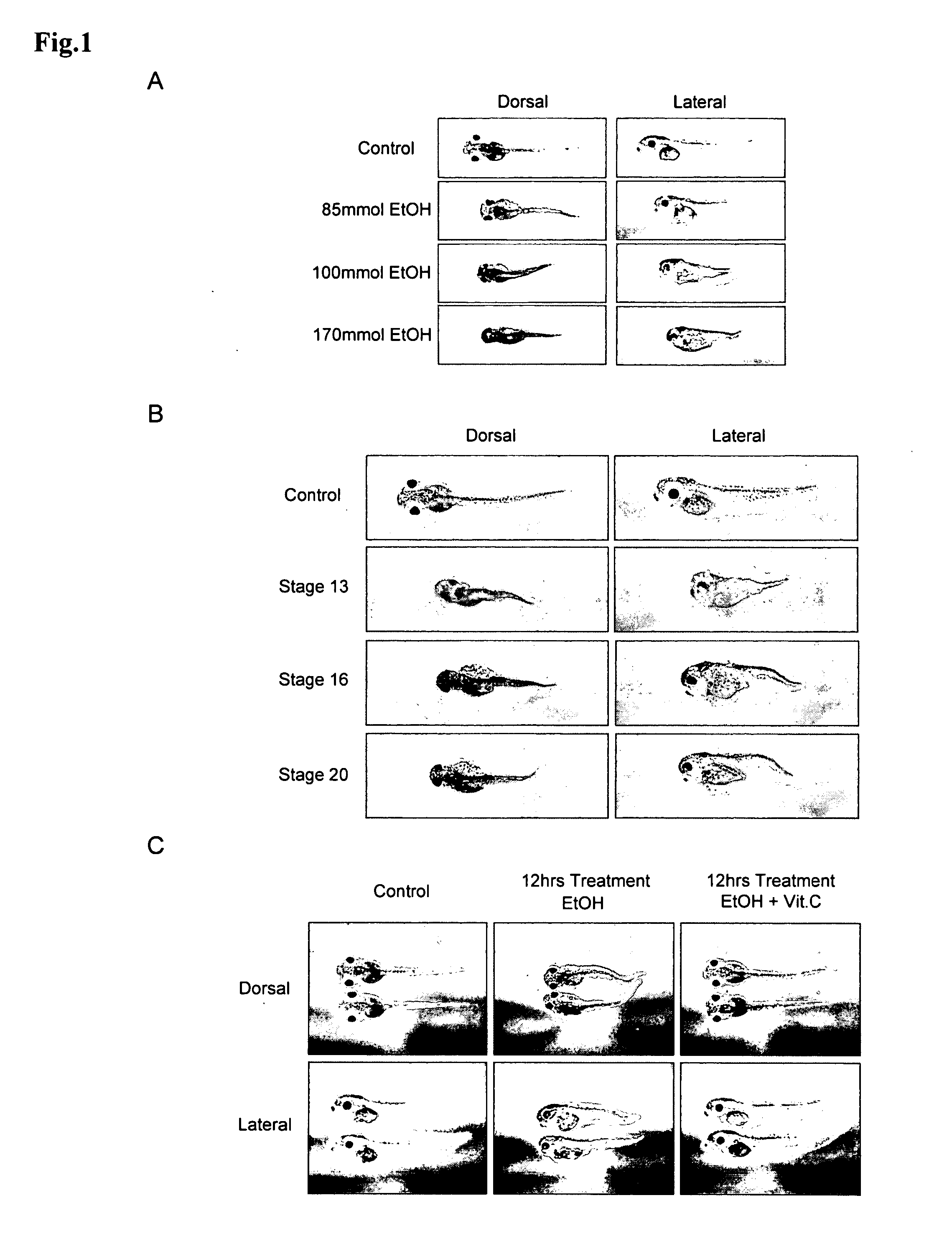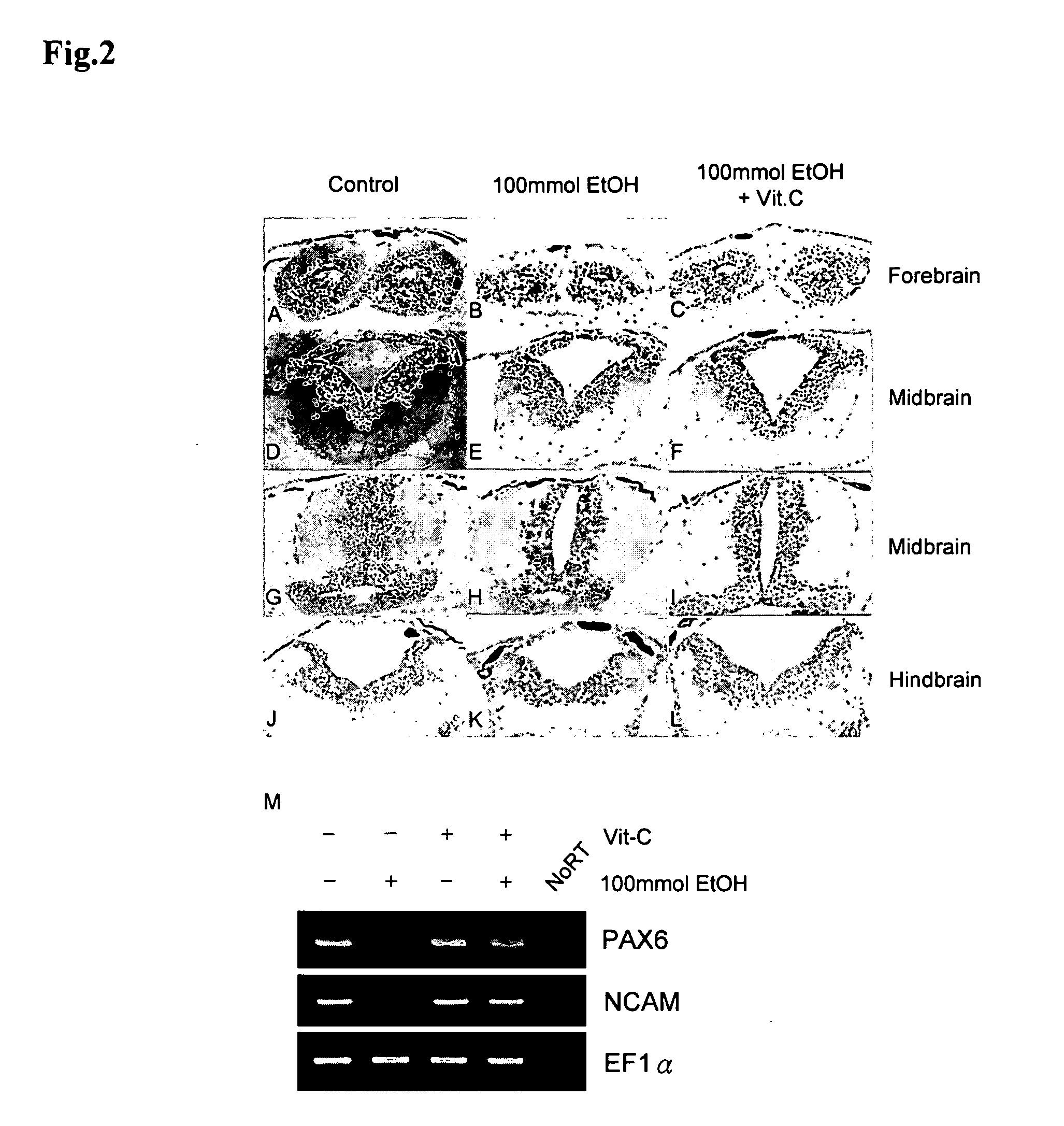Animal model for fetal alcohol syndrome and methods of treatment
a technology animal model, which is applied in the field of animal model of fetal alcohol syndrome, can solve the problems of affecting the development of astroglial cells, affecting the function of gaba, and the mechanism by which ethanol leads to these effects is not clearly understood, so as to effectively prevent alcohol-induced ros production and nf-b activation
- Summary
- Abstract
- Description
- Claims
- Application Information
AI Technical Summary
Benefits of technology
Problems solved by technology
Method used
Image
Examples
Embodiment Construction
[0027] In the following detailed description, reference is made to the accompanying drawings, which form a part hereof and show by way of illustration specific exemplary embodiments in which the invention may be practiced. These embodiments are described in sufficient detail to enable those skilled in the art to practice the invention, and it is to be understood that other embodiments may be utilized, and that changes may be made without departing from the spirit and scope of the present invention. The progression of processing steps described is exemplary of embodiments of the invention; however, the sequence of steps is not limited to that set forth herein and may be changed as is known in the art, with the exception of steps necessarily occurring in a certain order.
[0028] Embryo collection and experimental conditions for Xenopus model. Xenopus laevis embryos were obtained by in vitro fertilization as previously described (Peng, 2000). Developmental stages of embryos were determi...
PUM
 Login to View More
Login to View More Abstract
Description
Claims
Application Information
 Login to View More
Login to View More - R&D
- Intellectual Property
- Life Sciences
- Materials
- Tech Scout
- Unparalleled Data Quality
- Higher Quality Content
- 60% Fewer Hallucinations
Browse by: Latest US Patents, China's latest patents, Technical Efficacy Thesaurus, Application Domain, Technology Topic, Popular Technical Reports.
© 2025 PatSnap. All rights reserved.Legal|Privacy policy|Modern Slavery Act Transparency Statement|Sitemap|About US| Contact US: help@patsnap.com



